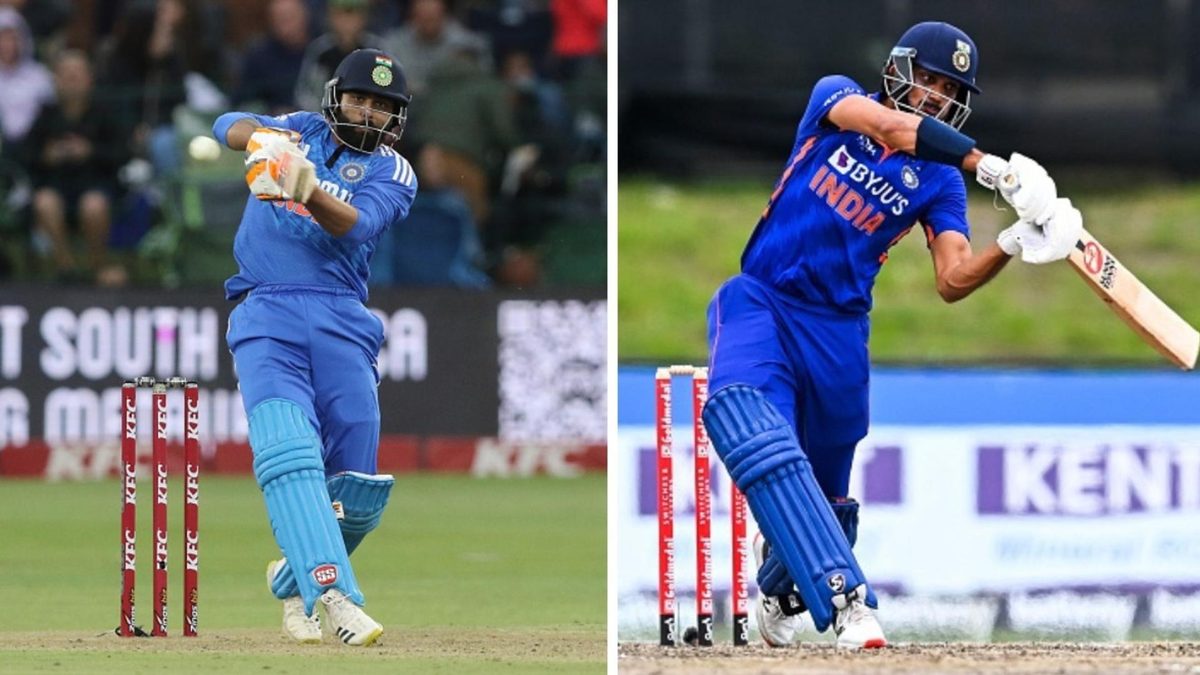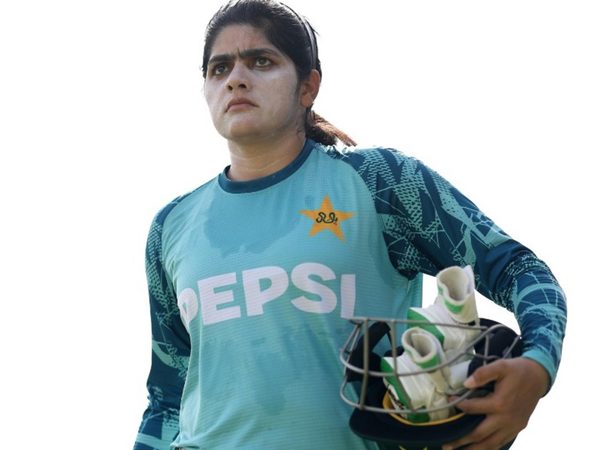
Ravindra Jadeja and Axar Patel are both slow left-arm orthodox bowlers and might not find a place in India’s XI together but Sarah Waris looks at why playing them both could solve several batting woes for the side in the 2024 T20 World Cup.
India will begin their T20 World Cup campaign with toned-down expectations. Their reluctance to adapt to the demands of a rapidly changing format sees them head into the edition with an ageing opener prone to slow down in the powerplay, and unthreatening finishers followed by a long tail. Despite the star names, it is easy to poke holes in the likely line-up.
In between Rohit Sharma at the top and Ravindra Jadeja at No.7, India have packed in an exuberant but out-of-form youngster, a T20 World Cup legend, though one who has a history of to getting stuck in the middle overs, a bonafide aggressive batter, a player on his comeback, two wicketkeepers who have flattered to deceive and an all-rounder whose hitting prowess is on the wane. Having left the promising Rinku Singh out of the squad, India’s lower middle order comprising Jadeja and Hardik Pandya fails to inspire against both pace and spin, a weakness that gets intensified when we consider that they will likely have four bowlers - all of whom can compete to bat at number 11 - next in the XI.
The bench will not allow for much flexibility either. Having opted to pick four spinners, the only extra batting option available to them will be the wicketkeeper left out of the XI (either Rishabh Pant 0r Sanju Samson), neither of whom are typically finishers. It leaves India with a shallow batting depth with Axar Patel being the only other capable batter.
Axar ended the recent IPL with 235 runs at an average of 29.38 along with two fifties, one of which was a knock of 66 in 43 balls when he was promoted to No.3. It marks his continued improvement with the bat in the last couple of years, starting with the 2022 IPL where he ended with a strike rate of 151.67, playing crucial cameos down the order. Soon after, he helped India to a series-sealing win in the second ODI against the West Indies, scoring 64* in 35 after his team fell to 205-5 in a run chase of 312. His batting surge has been on display in T20Is too - last year against Sri Lanka, he smacked 65 in 31 while batting at No.7 after his side was tottering at 57-5 in the steep chase. Though India lost the game, Axar’s batting was a highlight.
India have picked Axar primarily as a backup bowler to injury-prone Jadeja in a spin-heavy squad for the T20 World Cup. With similar skill sets, Axar is often seen as his like-for-like replacement and was pushed to essay Jadeja’s role during the 2022 T20 World Cup when the latter was injured. Recent trends show how India view Axar too. He was picked for India’s T20I series against Australia, which Jadeja did not take part in. Axar averaged 20.66 with the ball but was sidelined for the next tour against South Africa when Jadeja returned. The two have never featured in the same XI in T20Is either but India should not ignore the batting potential Axar provides.
There remain apprehension around under-bowling either Jadeja or Axar with both in the team, but clear-defined roles can eliminate much of that. While Jadeja is usually a middle-overs operator, Axar is the more adaptable T20 bowler, delivering the ball from considerable height, gaining extra bounce. Not the greatest turner of the ball, Axar’s strength lies in bowling tight lines, which also makes him effective when the fields are up in the powerplay.
Axar has picked up 16 wickets in the first six overs in T20Is, averaging 17.8 with an economy rate of 7.28. During the T20I series against Australia last year, skipper Suryakumar Yadav bowled Axar upfront regularly with successful results. Axar picked up two wickets in the powerplay throughout the series at an economy rate of five. But what stood out was his dot ball percentage of 63.9, indicating how tough it was to score against him.
India could use him similarly in the T20 World Cup, where pitches are already slow and sluggish, bowling him alongside Bumrah with the new ball. This will also allow Arshdeep Singh to bowl a majority of his overs in the death, where he excels. Jadeja can then bowl in the middle overs alongside Kuldeep Yadav, another left-hander but with different angles. Hardik and Shivam Dube are the other bowling options India will have.
During the press conference following India’s squad selection, Rohit was tight-lipped about picking four spinners in the squad, having also gone in with Yuzvendra Chahal. However, he did hint that the conditions in the Caribbean coupled with “technical aspects” could make him pick a spin-heavy side. If an attempt is made to decipher India’s tactics, it is unlikely that they will field three specialist pacers. Three slower bowlers might make the XI regularly, with Axar having to battle it out with Chahal for the last spot.
Chahal last played a T20I game for India in August 2023 and is yet to make his T20 World Cup debut. He was inconsistent in this year’s IPL with phases of brilliance alongside those of frustration. He has a batting average of 4.93 and is neither a safe fielder. Though he brings variety with his leg-break bowling in the attack, in the larger scheme of things, Axar brings more versatility.
Playing Axar might not be enough for India for they have larger issues but his presence will allow India to break the monotony of a fixed batting line-up, having been used as a floater before. Jadeja is not in prime hitting form either, which further alleviates the importance of an additional batting option in the side. Among the available resources, he is India’s best bet to provide some much-needed balance. But it will require some bold strategies and moving away from the norm. Over to Rohit.
Subscribe to the Wisden Cricket YouTube channel for post-match analysis, player interviews, and much more.








